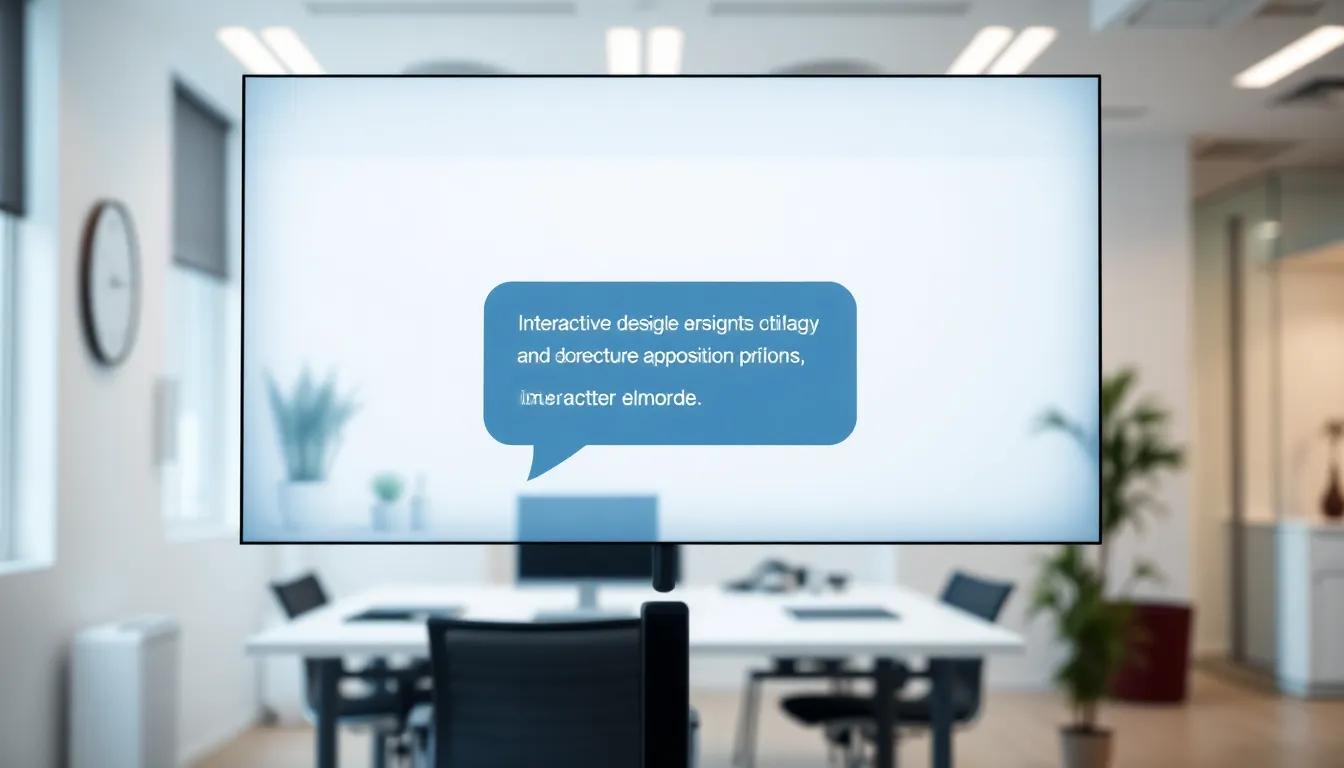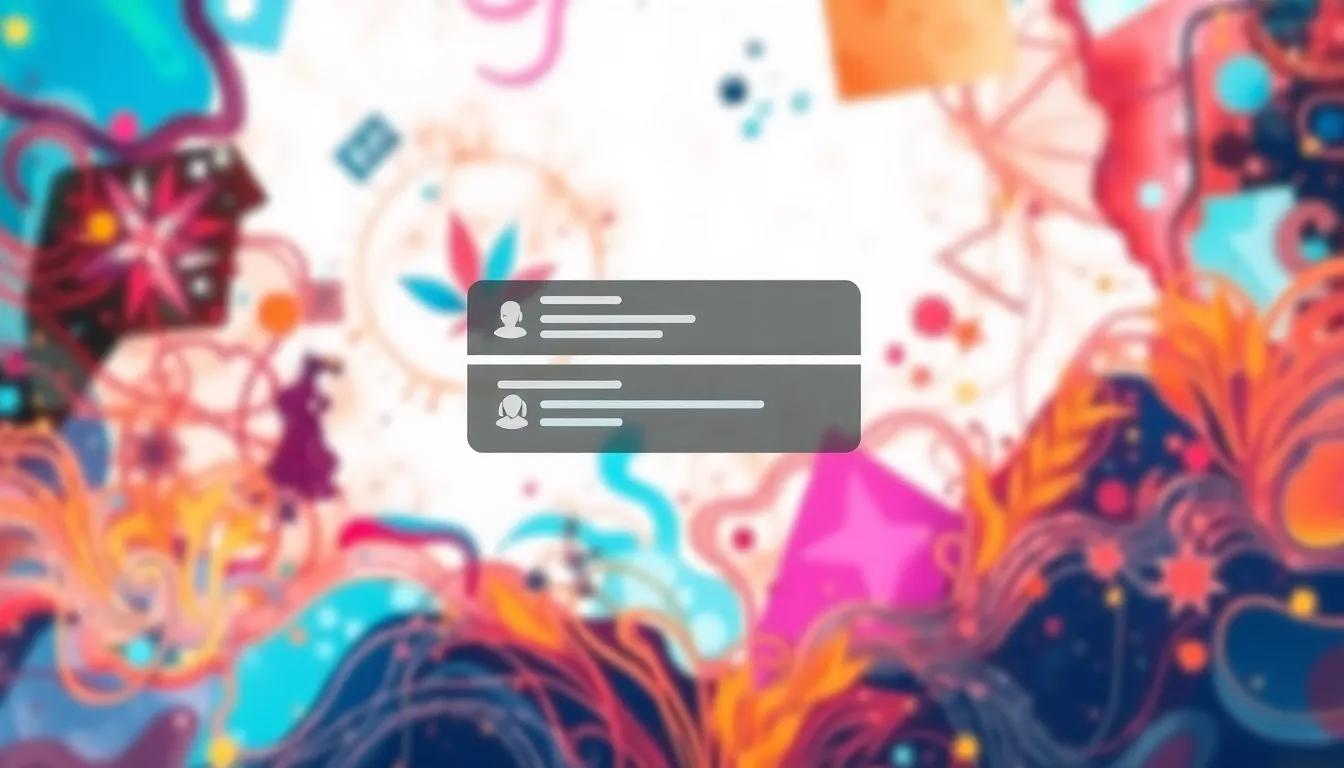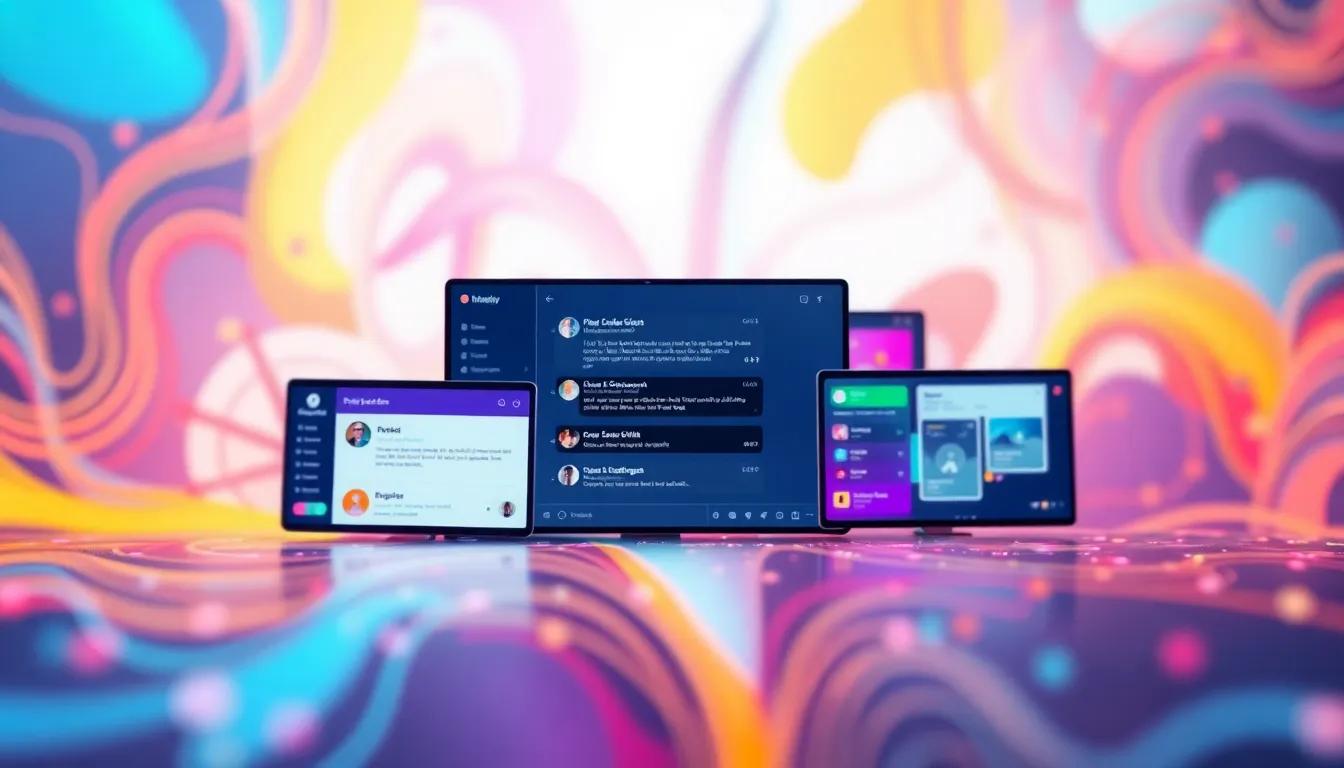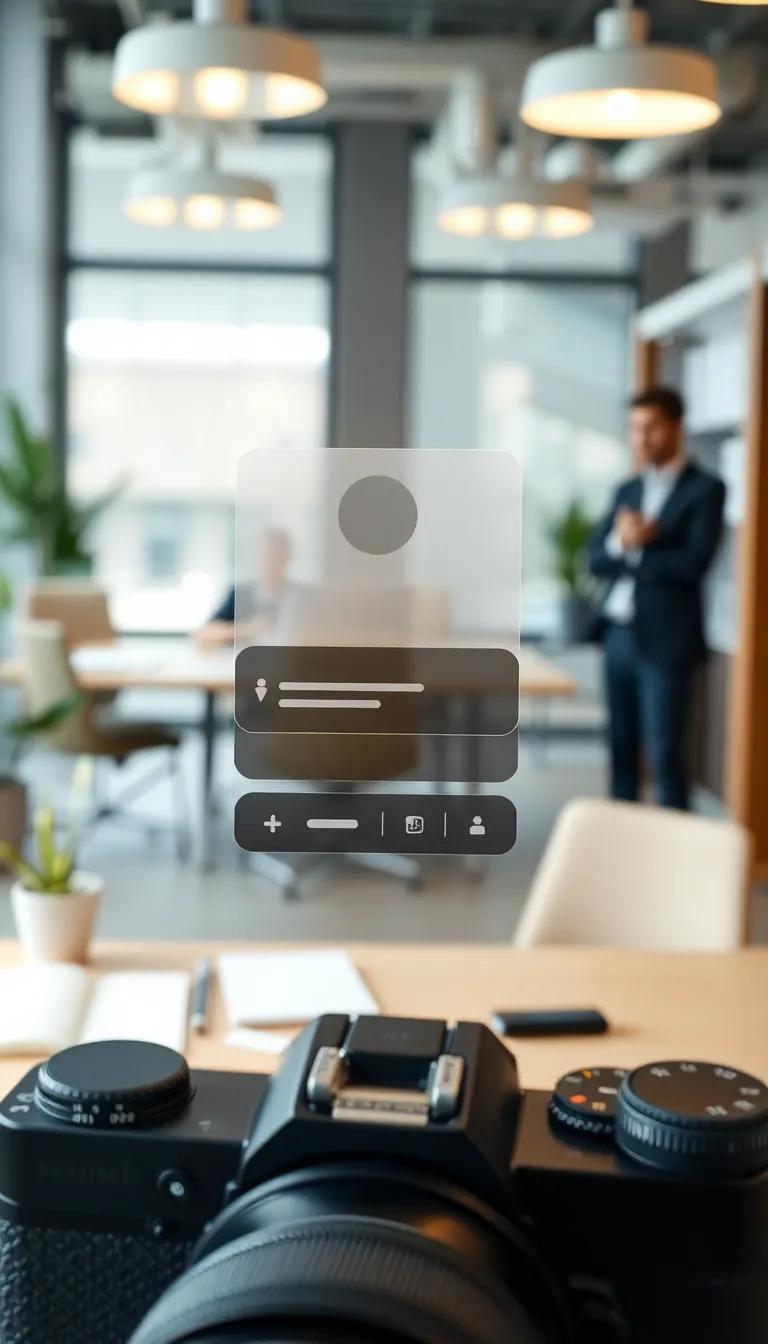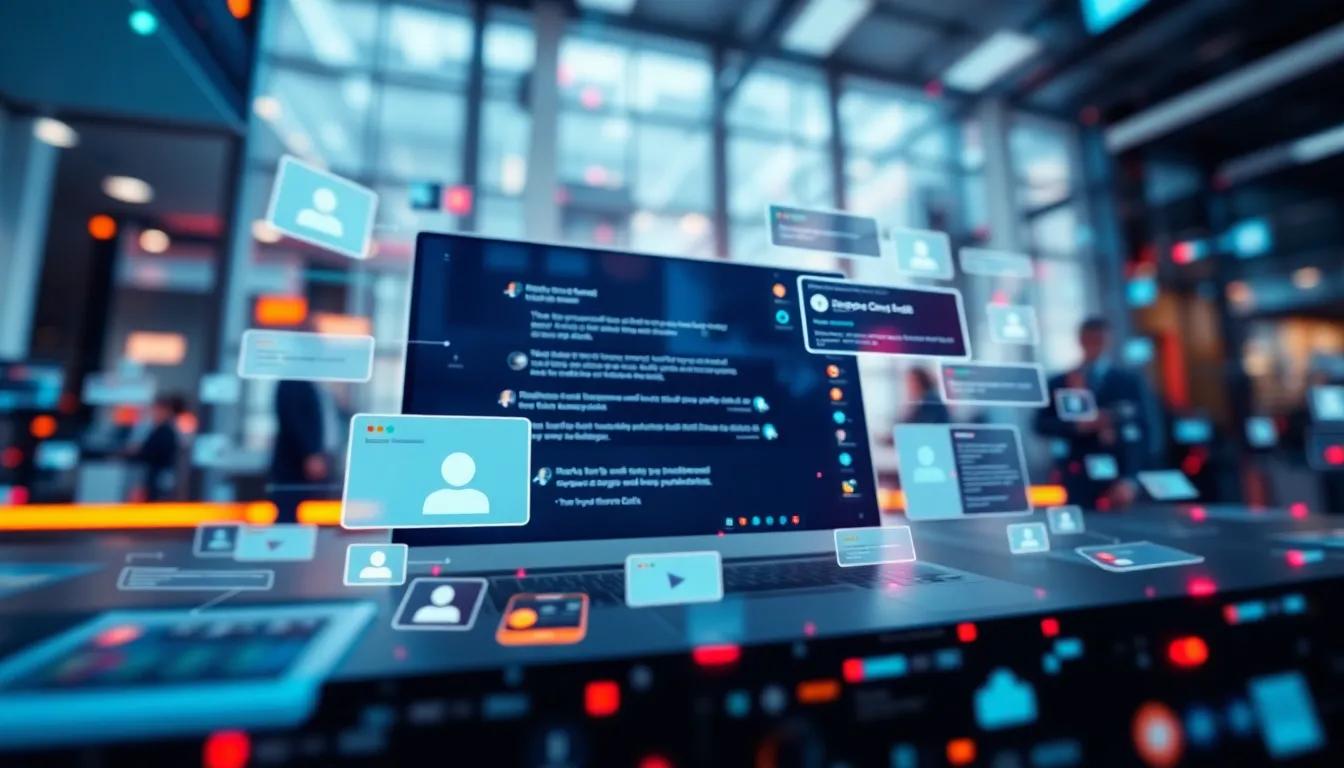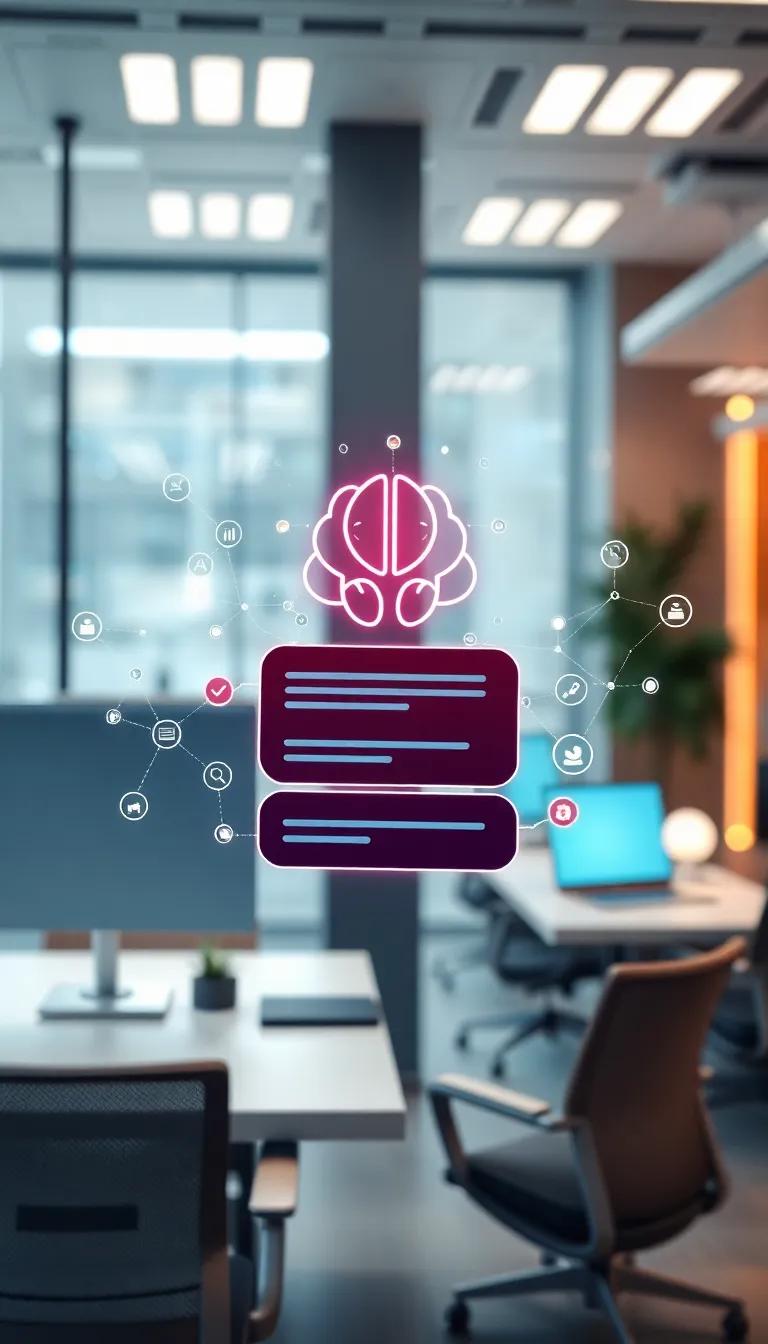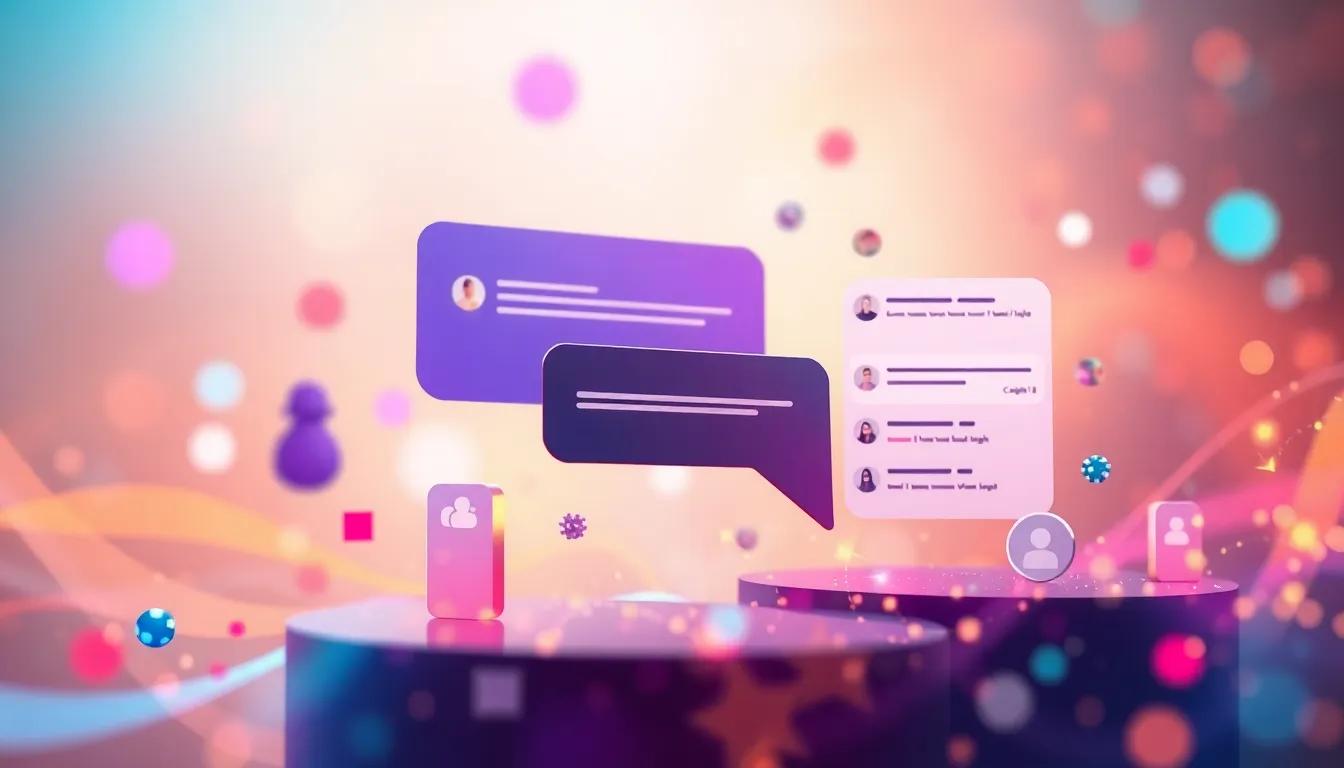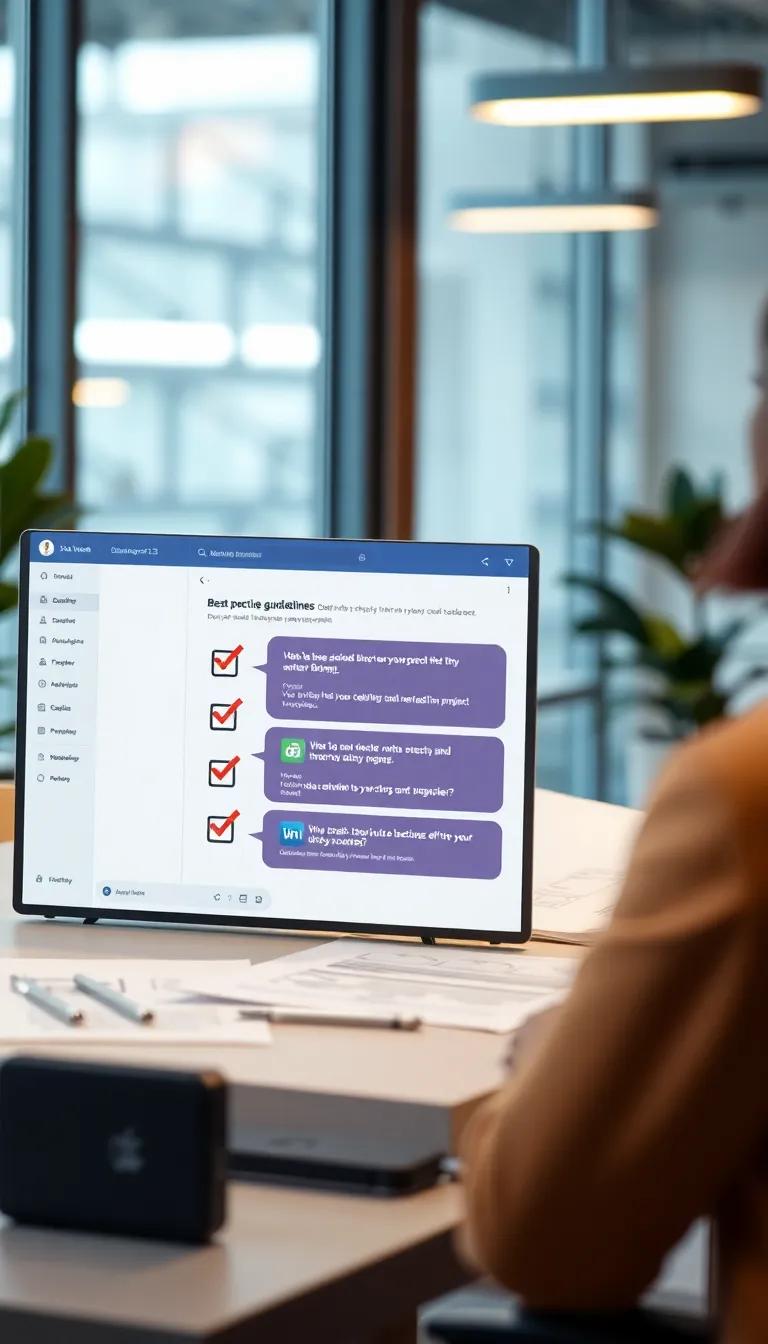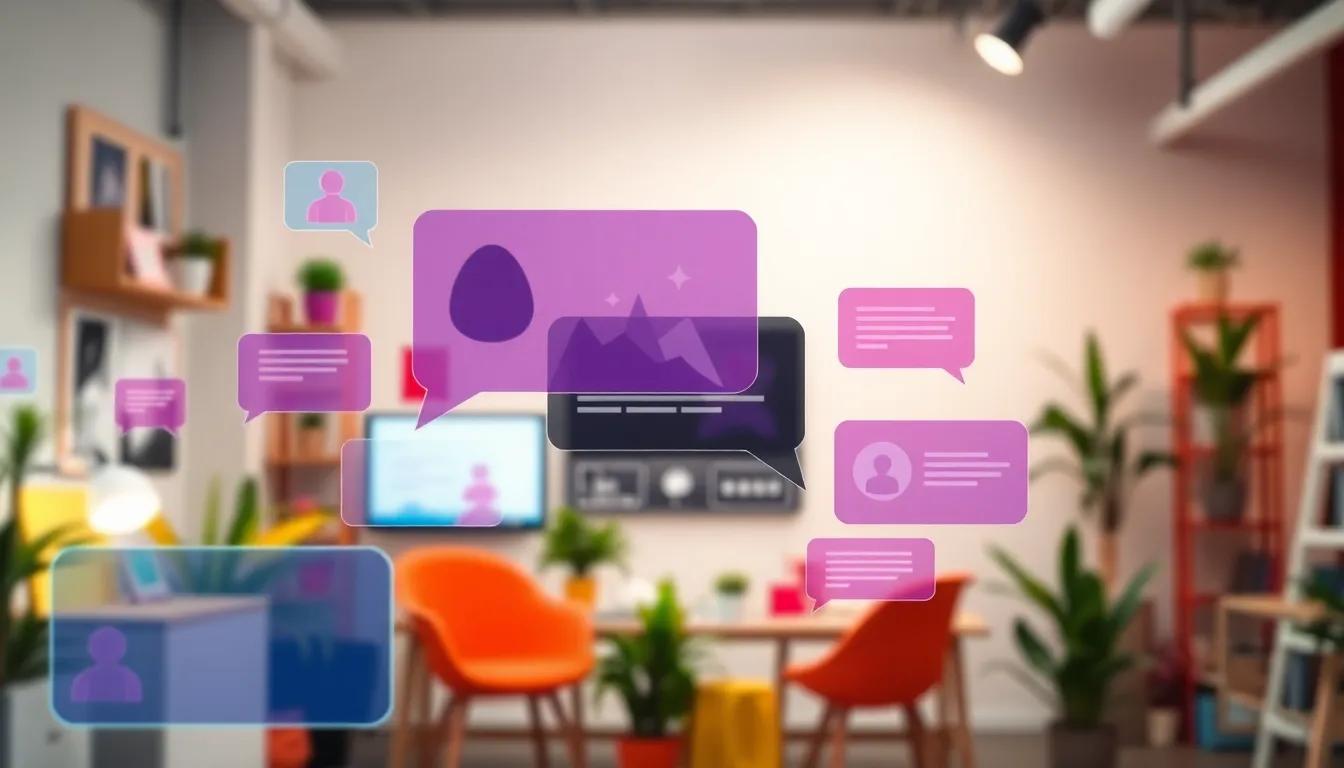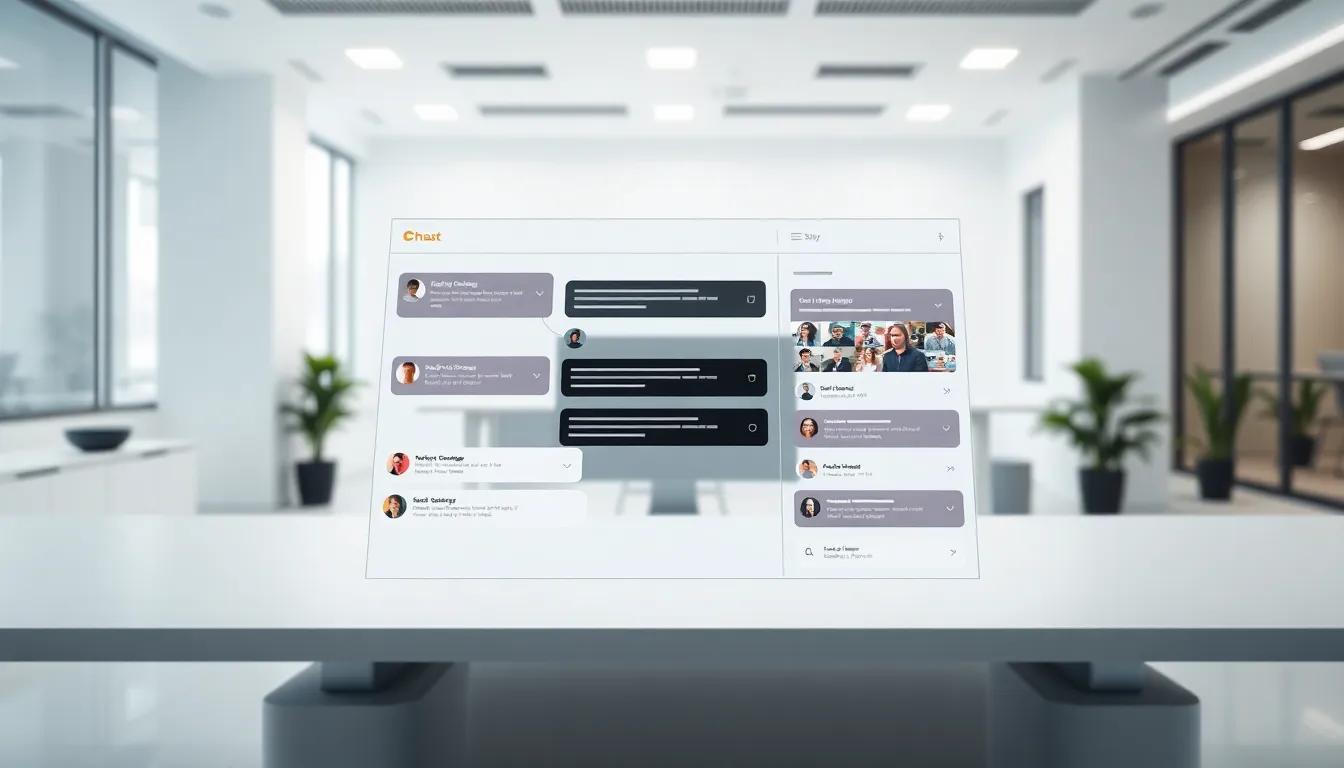Introduction
The way we communicate has dramatically transformed. Among these transformations, chat interfaces have emerged as pivotal tools for businesses seeking to enhance customer interaction. A well-designed chat interface not only boosts user engagement but also contributes to customer satisfaction and loyalty. As users become increasingly accustomed to instant communication, implementing innovative chat design techniques can set a website apart from its competitors, catering to the modern consumer’s expectations.
Offering insights into modern techniques that foster effective communication. By examining layout principles, user experience optimizations, and interactive features, we will explore how a thoughtfully crafted chat interface can lead to website chat success, ultimately driving conversions and improving overall user experience. From basic principles to advanced strategies, this comprehensive guide is tailored for web developers and designers aiming to enhance their chat functionalities.
Understanding Chat Interfaces The Essence of Modern Communication
The concept of chat interfaces has evolved significantly since their inception, transitioning from basic text-based systems to sophisticated platforms that facilitate real-time communication. Initially, chat interfaces were rudimentary, mainly utilized in the realm of instant messaging with simple text input and output functionalities. As technology advanced, so did the the user expectations, leading to a more interactive and visually appealing design.
In contemporary web design, chat interfaces are integral, serving as the bridge between businesses and their customers. The rising demand for instantaneous support and feedback has positioned chat interfaces as a crucial element in enhancing user experience. Not only do they provide immediate assistance, but they also allow for personalized interactions that can significantly boost customer satisfaction and retention.
Modern chat interfaces are designed with various functionalities that cater to the needs of both users and businesses. These functions include chatbots for instant responses, live chat options for human interaction, and the ability to track user queries over time. By integrating these features seamlessly into web design, brands can create an engaging environment that encourages users to communicate freely.
One of the key elements in the evolution of chat interfaces is the incorporation of artificial intelligence. Intelligent algorithms now enable chatbots to learn from user interactions, providing more relevant responses and solutions over time. This growth in AI technology has transformed chat interfaces from simple query-response systems into intelligent conversational agents capable of handling complex requests and engaging users in meaningful dialogue.
The placement and design of chat interfaces on websites have proven critical in maximizing user engagement. The interface must be easily accessible without being obstructive to the overall web experience. Strategic positioning, such as lower corners or floating widgets, allows users to engage when they are ready without feeling overwhelmed.
Chat interfaces have become a vital tool in modern web design, enabling effective communication that enhances user engagement and satisfaction. Their evolution from simple messaging systems to complex, AI-driven platforms reflects the necessity for businesses to adapt to changing communication dynamics. Given their significance, a well-designed chat interface can significantly contribute to the success of any online endeavor.
Key Elements of Effective Chat Design Essential Components for Website Chat Success
Layout: The Foundation of Interaction
The layout of a chat interface serves as the first impression for users, making it crucial to design with intention and clarity. A well-structured layout not only enhances visual appeal but also promotes usability. To create a seamless interaction experience, the chat window should be easily accessible, typically positioned in the bottom corner of the webpage. This placement ensures visibility without obstructing critical content. Avoid excessive clutter by maintaining a clean design that emphasizes important elements such as the text input area, message bubbles, and action buttons.
Utilizing distinct color schemes and typographical choices can significantly contribute to the effectiveness of the chat interface. A good practice is to apply contrasting colors for the chat window and the text, ensuring readability. Font size should also accommodate various devices, providing a comfortable experience for both desktop and mobile users. Icons for quick actions such as sending messages, attaching files, or accessing help should be intuitive, often following familiar conventions to minimize the learning curve for new users.
Usability: Encouraging User Engagement
Usability is paramount in enhancing user interaction within a chat interface. The interface must facilitate easy navigation, from initiating a conversation to receiving responses. Incorporating features like quick replies or suggested actions can reduce the time users spend formulating questions or responses. These elements not only accelerate communication but also guide users toward common inquiries, improving overall efficiency.
Another vital area for usability is the response time. Users expect prompt replies, so integrating automated responses for common queries can enhance satisfaction while they await a human representative. Also, providing visible typing indicators informs users that their messages are being processed, fostering a sense of engagement in the conversation.
Accessibility should not be overlooked in chat design. Ensure that the chat interface accommodates users with disabilities by implementing features such as screen reader compatibility and keyboard navigation options. Testing the layout with diverse user groups can uncover usability challenges and provide insights for necessary adjustments, ultimately leading to a more inclusive experience.
Effective chat interface design hinges on well-thought-out layout elements and robust usability features. By creating an engaging, easy-to-navigate chat environment, businesses can enhance user satisfaction and encourage ongoing interaction—a critical success factor in modern web communication.
Enhancing User Experience Strategies for Interactivity and Personalization in Chat Interfaces
To truly elevate user experience within chat interfaces, leveraging interactivity and personalization is paramount. These elements serve as the backbone for designing engaging chat experiences that not only capture user attention but also foster meaningful interactions. An effective strategy involves the incorporation of real-time feedback mechanisms, adaptive responses, and personalized content delivery.
Interactive Elements for Increased Engagement
Integrating dynamic features such as quick reply buttons, rich media, and multimedia support significantly enhances interactivity. Quick reply buttons enable users to respond swiftly without extensive typing, facilitating a fluid conversation flow. Incorporating images, videos, and GIFs can also enrich the dialogue, providing a visual context that words alone may fail to convey. This approach can be especially effective during complex queries, allowing users to access supportive materials effortlessly.
Implementing typographic indicators (like typing animations) can provide real-time feedback, reducing uncertainty and keeping users engaged. These subtle cues create a conversational rhythm that replicates human interaction, making users feel acknowledged and valued throughout their chat journey.
Personalization for Enhanced User Satisfaction
Personalization goes beyond simply addressing users by name; it involves tailoring interactions based on past behaviors, preferences, and context. By utilizing data analytics, chat interfaces can analyze user interactions to predict needs and adjust responses accordingly. For instance, if a user frequently asks about specific products or services, the chat interface can proactively suggest relevant options or updates about those items. This anticipatory approach not only enhances satisfaction but also drives user loyalty.
Employing context-aware responses adds another layer of personalization. Crafting replies that consider the user’s current situation or emotional tone can lead to richer interactions. For example, if a user expresses frustration or confusion, a more empathetic and understanding response can mitigate those feelings, effectively transforming a potentially negative experience into a positive one.
Combining interactivity with personalization creates a comprehensive chat experience that is enriching, engaging, and ultimately enhances the overall user experience. As developers and designers continue to innovate in this space, harnessing these techniques will be essential to maintaining relevance and achieving success in digital communication.
The Role of Artificial Intelligence in Chat Interface Design
Integrating AI Technology with Chat Interfaces
Artificial intelligence is revolutionizing how chat interfaces function on websites, leading to significant enhancements in user interactions and data processing. One of the primary benefits of AI integration is the ability to provide personalized responses based on user behavior and preferences. By analyzing past interactions, AI can tailor conversations to individual users, creating a more engaging and relevant experience.
Conversational agents equipped with natural language processing (NLP) capabilities are able to understand and respond to user inquiries in a way that feels more human-like. This technology minimizes misunderstandings and enhances the quality of interactions by accurately interpreting the intent behind users’ messages. Consequently, firms can offer timely and relevant responses, reducing the wait time and, in turn, increasing user satisfaction.
Enhancing Data Processing and User Interaction
AI-powered chat interfaces can streamline data processing significantly. Automation allows for the collection and analysis of vast amounts of user data in real-time, providing insights that drive continuous improvement in chat strategies. For instance, these interfaces can track common queries, identify user sentiments through analytical algorithms, and adjust their content and responses accordingly. This ongoing learning approach ensures that the interface evolves with changing user needs.
AI enables proactive interactions. Predictive analytics can anticipate user needs before they even articulate them. By analyzing patterns, AI systems can suggest relevant products, services, or solutions based on the user’s current behavior, offering a forward-thinking experience that keeps users engaged and enhances the likelihood of conversion. This level of intuition from a chat interface fosters a sense of attentiveness and personal care that resonates with users.
The successful implementation of AI in chat interfaces hinges on a well-designed user experience. While AI can dramatically enhance functionality and personalization, it should exist as part of an overall strategy focused on simplicity and clarity. If users feel overwhelmed by constant suggestions or too many automated responses, the benefits of AI can backfire, leading to frustration rather than engagement. As such, the challenge lies in balancing automation with genuine human-like interactions to create a seamless overall experience.
As organizations continue to adopt AI technology in their chat interfaces, the potential for improving user interaction and satisfaction remains vast. Embracing these advancements will be key in ensuring that businesses not only meet but exceed user expectations in their digital environments.
Best Practices for Implementation Effective Strategies for Chat Interface Design Success
Fundamentals of Implementation
Implementing a chat interface on a website requires careful consideration of several factors to ensure its effectiveness in engaging users. First and foremost, it is crucial to design the chat interface in a manner that aligns with the overall branding and user experience of the website. Consistency in colors, fonts, and tone of voice fosters familiarity and comfort, which can significantly enhance user interaction.
It is vital to position the chat interface in a readily accessible area of the website. A common practice is to place the chat icon in the bottom corner of the screen, where users can easily locate it without it obstructing content. This positioning encourages spontaneous engagement while minimizing disruption to the browsing experience.
Testing and Iteration
The journey towards a successful chat interface does not end at implementation. Continuous testing and iteration play a pivotal role in refining the chat experience. It is advisable to utilize A/B testing techniques to experiment with various elements, such as chat prompts, response timing, and even the inclusion of multimedia like images or videos. By analyzing user interaction data, businesses can determine which combinations yield the highest engagement rates.
Feedback mechanisms should also be integrated into the chat interface. Post-chat surveys can be an effective way to gauge user satisfaction and gather insights on areas for improvement. By asking targeted questions about the effectiveness of responses and overall chat experience, businesses can derive actionable insights that inform subsequent enhancements to the chat system.
Keeping an eye on analytics is essential. Metrics such as response times, user engagement rates, and conversion statistics can provide valuable information on how well the chat interface is performing. This data-driven approach allows for informed decision-making, ensuring that the chat service remains relevant and appealing to users.
The implementation of a chat interface is not a one-time effort but a continuous process that demands attention to detail, user feedback, and a commitment to improvement. By integrating these best practices, businesses can create engaging chat experiences that enhance user interaction and drive success.
Case Studies of Successful Chat Implementations Engaging Users through Effective Chat Interface Design
Examining real-world examples provides insights into the power of chat interfaces for enhancing user engagement and driving sales. Various companies have adeptly integrated modern chat design techniques that resonate well with their audiences, leading to significant improvements in customer experience and conversion rates.
1. Sephora: Personalized Beauty Advice
Sephora has successfully leveraged chat interfaces to provide personalized beauty consultations. By integrating a chat solution on their website, they offer users access to knowledgeable beauty advisors. The chat interface employs a user-friendly design with easy navigation options, allowing customers to ask product-related questions or seek makeup tips. This tailored approach not only enhances customer satisfaction but also results in higher sales due to the direct interaction with knowledgeable staff. The chatbots cleverly handle FAQs, while human agents step in when the queries become complex, ensuring a seamless transition that retains user engagement.
2. Hootsuite: Enhancing Customer Support
Hootsuite, a social media management platform, has adopted chat interfaces to streamline customer support. Their chat feature is integrated within their website and mobile apps, providing a centralized point for users to get help. The chat design is minimalistic, allowing for quick access to resources and live support. By using chat automation to triage inquiries, Hootsuite reduces response times significantly, resulting in a better service perception among their users. Their implementation showcases how effective chat interfaces can usher in a more dynamic interaction model, catering to customer needs promptly and efficiently.
3. Zappos: Engaging Through Conversational Commerce
Zappos, the renowned online shoe and clothing retailer, utilizes chat interfaces to foster conversational commerce. Their chat design is welcoming and features a blend of human touch and AI efficiency. The interface is equipped to handle everything from product recommendations to order inquiries. By adopting a friendly tone and providing quick responses, Zappos builds trust and rapport with its customers. Implementing advanced AI capabilities allows for personalized interactions based on previous customer behavior, further enhancing engagement levels and driving conversion rates.
These case studies illustrate the potential of modern chat design techniques to elevate user interaction and boost sales. By effectively combining user-friendly interfaces with personalized communication, companies can create engaging experiences that resonate deeply with their audience, facilitating a successful chat implementation strategy.
Future Trends in Chat Interface Design Innovations That Will Shape Digital Communication
As technology progresses, so too does the potential for revolutionizing the chat interface design for websites. Emerging trends focus on creating seamless user experiences that prioritize personalization, accessibility, and real-time interaction. These innovations are set to define the future of digital communications, enhancing how businesses engage with their customers.
Integration of Artificial Intelligence and Machine Learning
The integration of artificial intelligence (AI) and machine learning is anticipated to redefine user interactions with chat interfaces. By utilizing these technologies, businesses can create chatbots that learn from user behaviors and preferences, constantly improving their responses. This results in more relevant and contextual conversations, fostering a more engaging user experience. Predictive analytics driven by machine learning can facilitate the anticipation of user needs, offering proactive assistance that not only resolves issues faster but also enriches the overall dialogue.
Voice and Conversational Interfaces
The rise of voice-activated devices presents a significant opportunity for chat interfaces. Users increasingly favor voice commands over text, prompting designers to consider how chat systems can respond to voice inquiries. Conversational design centers not just around written dialogue but also how users interact verbally. As natural language processing evolves, it will be essential to develop chat interfaces that can interpret tone and intent with greater accuracy. This evolution encourages a more natural and intuitive interaction flow, which can enhance user satisfaction and engagement.
Rich Media Formats
The future of chat design is also leaning towards the incorporation of multimedia elements. Beyond traditional text responses, chat interfaces are beginning to integrate images, videos, and gifs into conversations. These rich media formats can make chats more dynamic and engaging, allowing for deeper storytelling and brand connection. For instance, a company could use a short video to explain a complex product, providing instant clarity and engagement.
Enhanced Personalization and User Experience
Users are seeking more tailored experiences in their interactions. Future chat interfaces will likely employ advanced algorithms to analyze user data, enabling customized recommendations and personalized conversations. By automatically adapting to individual preferences and behaviors, chat interfaces can significantly boost customer satisfaction and retention rates. Engaging users through personalized greetings, follow-ups, and dynamic content will establish a more inviting atmosphere and encourage ongoing interaction.
With these emerging trends in chat interface design, businesses can expect to foster deeper connections with users, ultimately leading to enhanced engagement and successful customer journeys.
Conclusions
The design of a chat interface is a crucial component of any website’s user interaction strategy. Through the integration of modern techniques and a deep understanding of user needs and behaviors, businesses can significantly enhance their chat functionalities. The importance of elements such as accessibility, responsiveness, and interactivity cannot be overstated, as these factors contribute to a positive user experience and encourage further engagement.
As the landscape of online communication continues to evolve, so too must the strategies employed in chat interface design. By progressively adopting new technologies and refining interfaces based on user feedback, businesses can ensure that their chat systems not only meet but exceed user expectations, paving the way for improved customer relationships and success in the digital marketplace.

